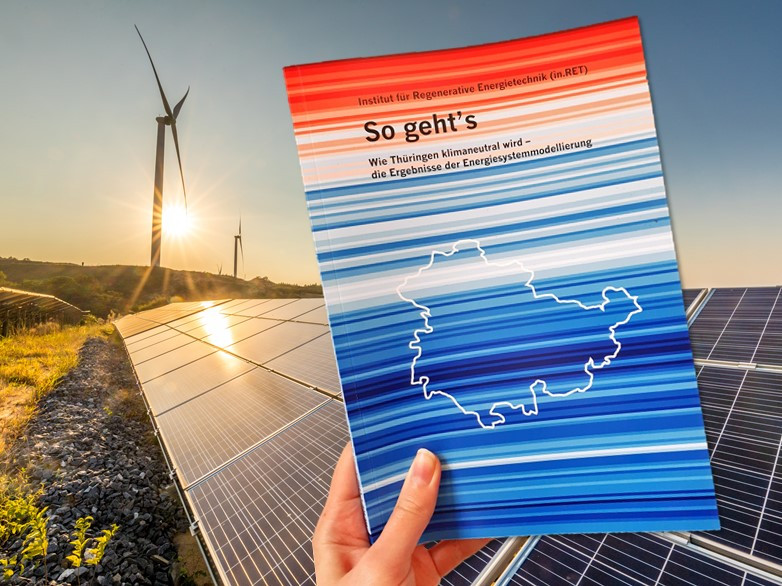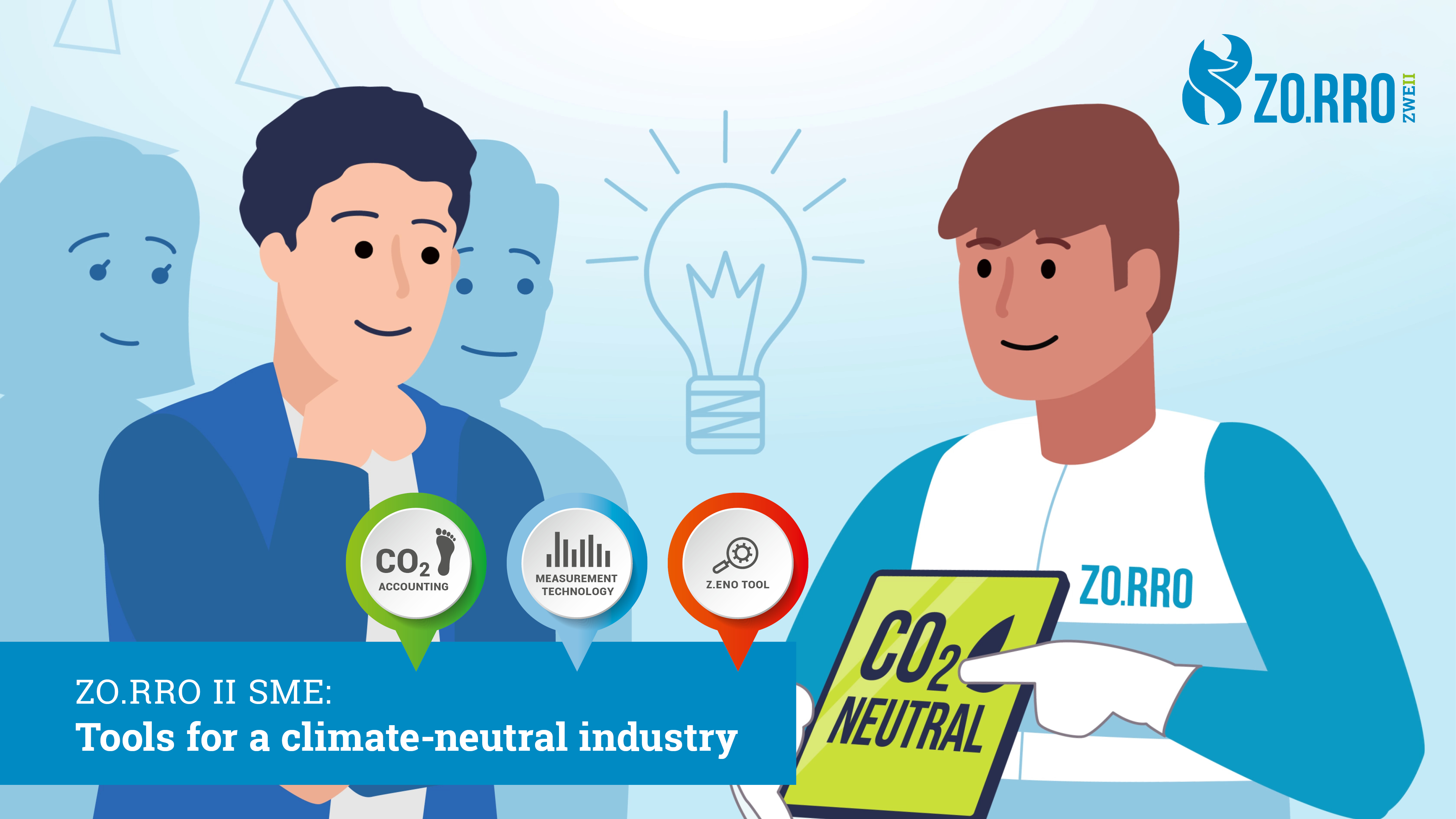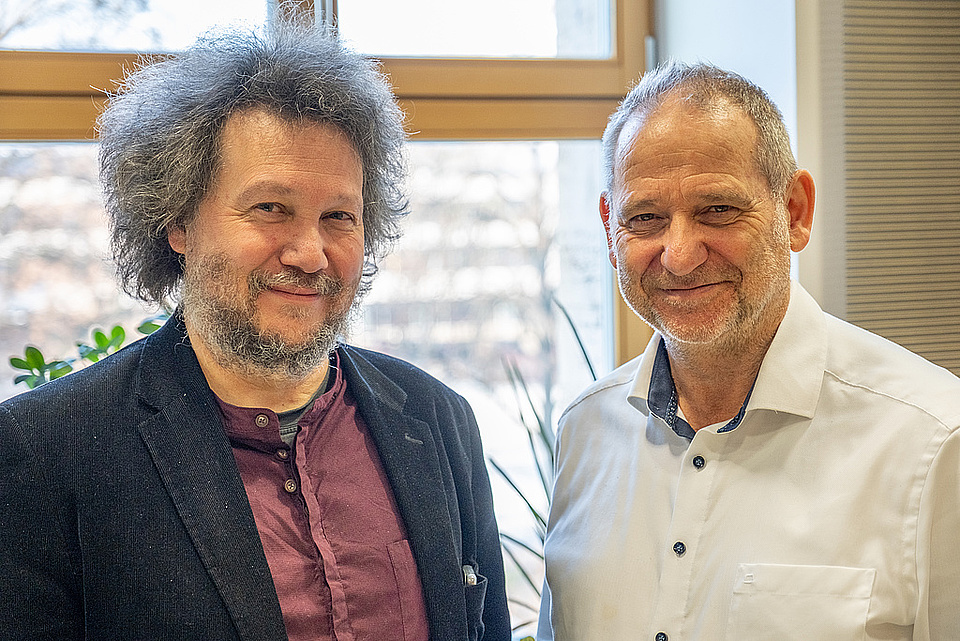Feasable and affordable – a climate-neutral energy system for Thuringia
Erfurt, January 21st, 2022: Minister for Environment Anja Siegesmund, along with Prof. Viktor Wesselak (Nordhausen University of Applied Sciences), presented a digital energy transition calculator that is unique at state level today.
Using the calculation model, a research team from Nordhausen University of Applied Sciences came to the following conclusion: A climate-neutral Thuringia is secure in terms of supply, cheaper in the long run and increases regional value creation compared to the status quo. According to the researchers, the most important instruments on the way to climate neutrality are binding expansion targets for renewable energies and clear reduction targets for greenhouse gas emissions.
"Making the energy transition clean, social and safe is our goal. To achieve this, we now have a calculation model at hand that is unique in Germany. It shows how we can achieve the climate policy goals," said Environment Minister Anja Siegesmund. "For us to achieve greenhouse gas neutrality, we need a booster for renewable energies. With tailwind from the new federal government, we will strongly expand wind and solar energy," Siegesmund continued.
With the simulator from Nordhausen University of Applied Sciences, Thuringia is the first federal state that can virtually map and configure its energy system. This provides an enormously valuable tool for energy policy. The energy transition calculator functions as a freely available open source software and (because it is variably scalable) is available to other German states, municipalities, energy suppliers, public utilities and companies.
"We can use it to show how the energy supply based on renewable energies must be designed in order to reliably cover the energy demand in all sectors, which varies greatly throughout the day and year. And this has to be done in favour of regional value creation, using regional potentials," said Professor Viktor Wesselak.
The energy transition calculator works with adjustable variables: The reduction of CO2 emissions can be specified and has an impact on target values such as expansion of renewable energies (wind, solar, biomass), sector coupling (e.g. power to heat), costs and security of supply. Target values in turn have implications for the extent and pace of CO2 reduction. Which technologies will be deployed and under what conditions? Which instruments are most powerful? And is it in total affordable? The energy system model presented today provides answers to these and many other questions on the design of the energy system.
Rapid expansion of wind and solar energy & more energy efficiency
All calculated scenarios show that a rapid expansion of high capacity wind power and photovoltaics must take place. In concrete terms, this means a tripling of installed capacity for both technologies by 2030. Only then would the goals anchored in the Climate Framework be achievable. Wind energy currently has an installed capacity of around 1,700 megawatts (844 turbines). The installed capacity of photovoltaics (around 38,000 systems) is around 1,970 megawatts. In addition, the calculations assume a significantly decreasing final energy demand until 2050. The background to this is the full implementation of the energy efficiency measures planned at federal level, particularly in the building sector.
New storage facilities, power-to-heat technology & upheaval in biogas
The gradual replacement of fossil fuels in the heat sector requires the continuous expansion of power-to-heat technologies in conjunction with seasonal heat storage. Electrical energy can be stored in electrochemical energy storage facilities and pumped hydroelectric energy storage plants (PHES). For natural gas and hydrogen, underground caverns are suitable storage facilities in Thuringia. The modelled heat storage pools decentralized sensible heat storages in the individual local and district heating networks. Biogas will increasingly replace fossil natural gas as bio methane, based on today's pure electricity and heat production in cogeneration. This will benefit industrial and commercial users of fuel gas for the provision of process heat in particular.
An energy system model (ESM) schematically depicts a real energy system. The most important components of an ESM are the different energy forms (typically primary, final, and utility energy) and the conversion and storage technologies in between. On the other hand, the consumption sectors "industry", "households & commerce, trade, services" and "transport" (utility energy) have a quantity of primary energy (fossil or wind, solar, water, biomass) available as input. The energy system model tries to identify an optimum of the system composition. This optimum can be achieved, for example, by a minimum of greenhouse gas emissions or total costs.
The presented results were developed within the research project "Case Study Thuringia" as a subproject within the project "ZO.RRO -Zero Carbon Cross Energy System" funded by the German Federal Ministry for Economic Affairs and Climate Action.





